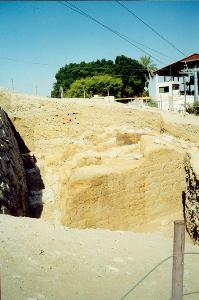Here Joshua sent two spies, whose lives a local prostitute named Rahab conspired to save. Days later, city walls fell here after Israel’s army marched around them for seven days. Here, too, Jesus encountered Zaccheus, a diminutive tax-collector who had climbed up a sycamore-fig tree for a better view of the Savior — an unlikely meeting place for a leading financier and a visiting rabbi.


